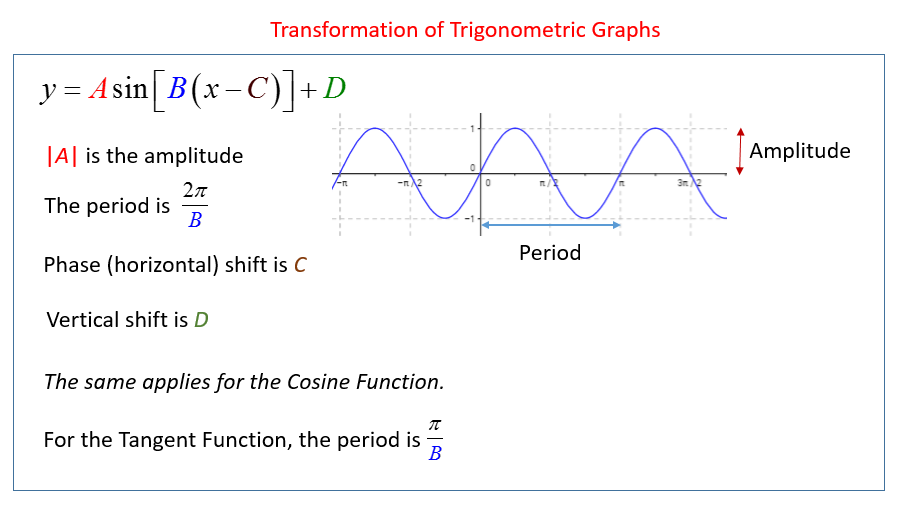43+ The Most Complete Amplitude Formula Trig. The phase shift is how far the function is. The circular functions (sine and cosine of real numbers) behave the. As we have seen, trigonometric functions follow an alternating pattern between hills and valleys.

43+ The Most Complete Amplitude Formula Trig Finding the amplitude of a trigonometric function.
Amplitude refers to the maximum change of a variable from its mean value (when the variable oscillates about this mean value). In chapter 4 we saw that the amplitude, period, and midline of a sinusoidal graph are determined by the coefficients in its formula. Without appropriate extensions, the definitions only permit to derive formulas subject to the angle we are concerned here with illustrating two pairs of formulas known as the sine and cosine addition. The amplitude of each of the functions sin x and cos x is 1.
In this video from patricjmt we look at how to find the amplitude, period and horizontal and vertical shifts of a trigonometric function. The amplitude is given by the multipler on the trig function. The amplitude of a trigonometric function is the maximum displacement on the graph of that function. List the properties of the trigonometric function.
The amplitude of a wave is the maximum displacement of the particle of the medium from its equilibrium position. What do i do if i cannot give a good reference to my phd student? Finding the amplitude of a trigonometric function. Determining the amplitude and period of a sinusoidal the amplitude of a sinusoidal function is the distance from the midline to the maximum value, or from the.